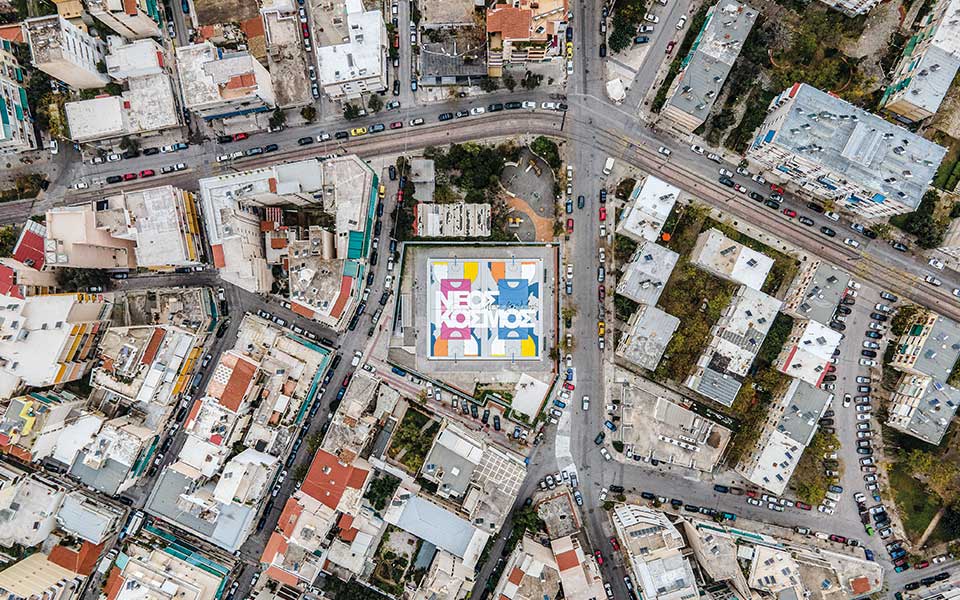Neos Kosmos has spent most of its history in the shadow of Athens. This area, whose name means “New World,” held out the promise of a new beginning for refugees from Asia Minor. Next year, in fact, marks the centenary of Turkey’s expulsion of more than a million ethnic Greeks, who subsequently found haven in Greece. A simple walk around the neighborhood underlines how the area has been transformed, with its quaint footpaths and two-story houses tucked between more modern structures, and its residential buildings now interspersed with car repair shops, spare parts dealerships, and other small businesses.
The refugee housing estate off Syngrou Avenue is now inhabited by new tenants from the Balkans, Asia and the Middle East. Post-war reconstruction erased most of the older houses, unfortunately stripping Neos Kosmos of much of its earlier charm. But a theater, a cultural center that opened on its fringes in 2010 and an ensuing succession of new restaurants, bars and cafés, have thrust a neighborhood whose appeal used to be restricted to its residents firmly into the limelight. Neos Kosmos is changing into a fascinating mosaic of symbiotic energy.
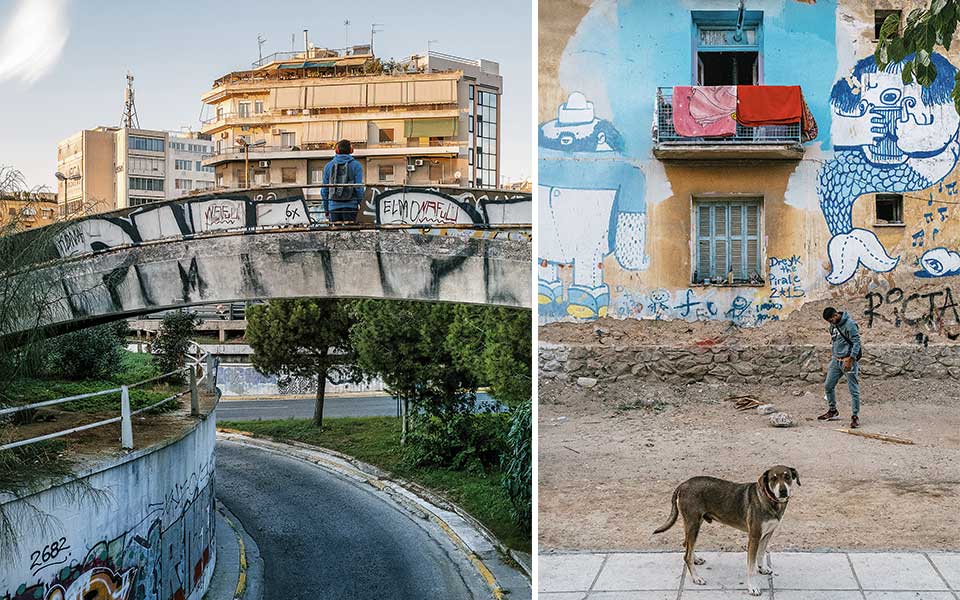
© Angelos Giotopoulos
Dourgouti
Many Athenians confuse the neighborhood’s official name with the area called Dourgouti, which is behind the Athenaeum InterContinental Athens hotel on Syngrou Avenue, but Dourgouti is basically a part of Neos Kosmos. Its story starts in 1914, when thousands of Armenians fled Turkey for Greece. To house the first of these refugees, the Order of the Knights of Malta bought a plot of land near present-day Syngrou. The settlement that emerged was named Dourgouti, after the land’s original owners. It was also known as Armenika, after its new Armenian residents.
When the 1922 Asia Minor Catastrophe sent a far greater wave of refugees to Greece, hundreds of shacks went up in Dourgouti to house new arrivals. Makeshift structures made of scavenged materials mushroomed around small buildings erected with money from the League of Nations. Overwhelmed by this sudden demand for housing, the state established the notion of vertical ownership. The Ministry of Social Welfare built the first apartment blocks for its new refugee housing estate in Dourgouti in 1935, in the socio-economic spirit of the modernist Bauhaus movement. Building continued until the outbreak of WWII. During the Regime of the Colonels, also known as the Greek Junta, which lasted from 1968 to 1974, the last 15 apartment blocks went up. If you come here on the tram you’ll see them – complete with new murals.
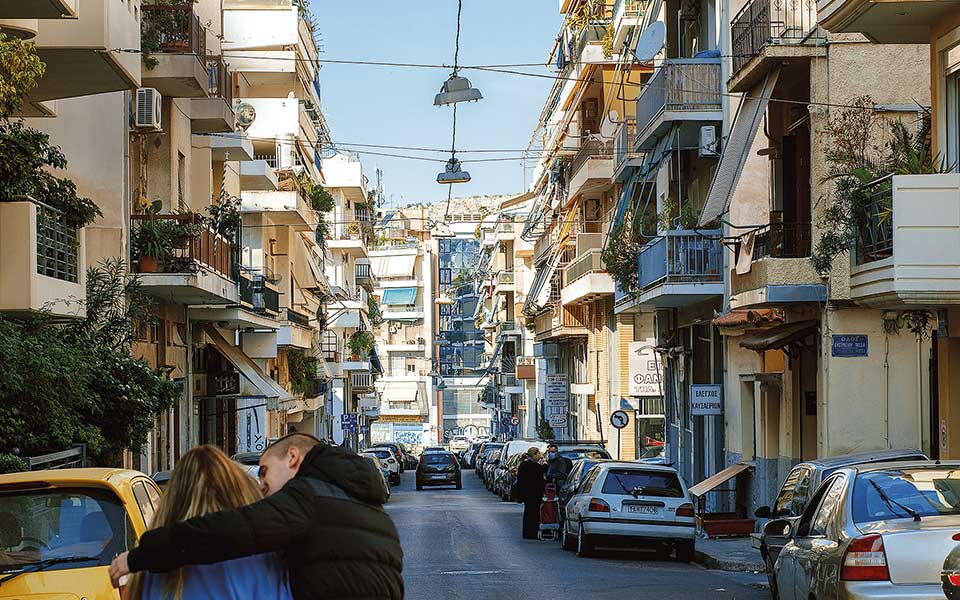
© Angelos Giotopoulos
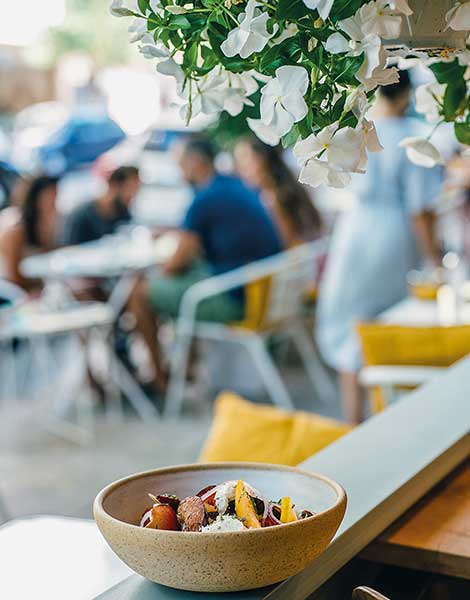
© Angelos Giotopoulos
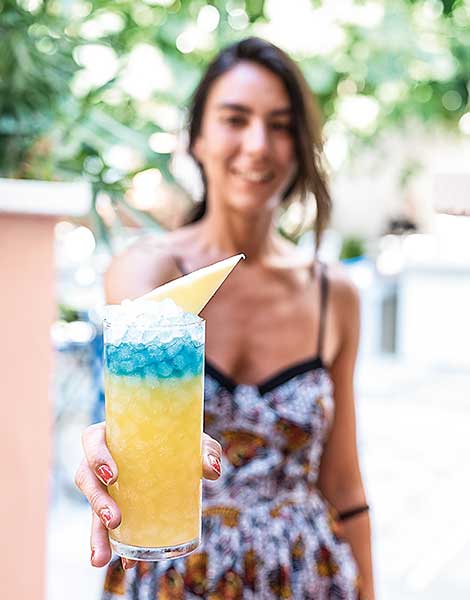
© Angelos Giotopoulos
A cultural destination
Even before Neos Kosmos had tram and metro connections (built for the 2004 Athens Olympics), people would come here to listen to their favorite bands at Stavros tou Notou live music stage or catch a play at Neos Kosmos Theater. The arrival of the Onassis Stegi, a cultural center, 11 years ago brought with it live theatrical and musical performances, art exhibits, festivals and discussions.
It would be no exaggeration to say that many Athenians got to know Neos Kosmos thanks to the Onassis Stegi, which makes a point of organizing events geared at creating interactions with the neighborhood. Soundscapes/Landscapes, for example, is a smartphone app that offers visitors an audiovisual tour of the refugee housing estate, the churches, the public areas, and the Saturday open-air market (with sellers peddling fruit, vegetables, fresh fish, spices and more). Its OnAthens initiative – carried out in cooperation with street artists SAME84 and Ath1281 – filled empty lots, basketball courts and playgrounds with color. Reaching out to the community is important; Neos Kosmos is still very much a neighborhood that’s all about its residents.
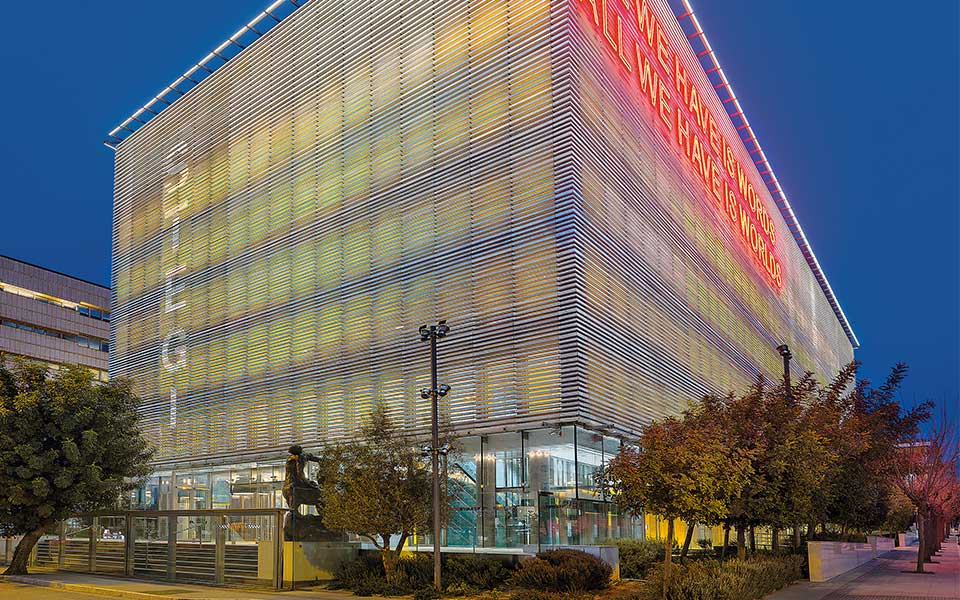
© Stelios Tzetzias, courtesy of the Onassis Foundation
The old-timers
Until hip restaurants, cafés and bars started springing up recently, Neos Kosmos was not the kind of place where other Athenians would meet up. It was a place where people lived and worked, not where they let their hair down. Nevertheless, it had its classic watering holes, such as Batman, a legendary after-hours bar that would bring night owls from across the city who felt like drinking until dawn. Others came for the tasty bread rolls and the duck with blueberry sauce at Svejk, a two-story eatery that was the city’s first Czech restaurant when it opened 39 years ago, complete with figures from Jaroslav Hašek’s “Good Soldier Švejk” and images of Prague.
Apart from the usuals kafeneios, the area also had a few meze restaurants. Those who worked or wandered here would stop by Tomas’ for a beef kebab flavored only with salt and onion – made the same way by the eatery’s Armenian owner since 1983 – or for gyros in a pita from Achilleas, a souvlaki joint that’s been around since 1987 at the same address on Spintharou and even has the original sign to prove it.

© Angelos Giotopoulos
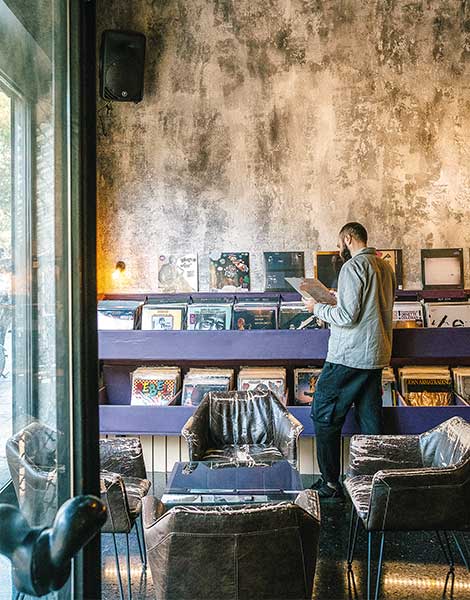
© Angelos Giotopoulos
A New Neos Kosmos
The recent increase in the arrival of new cafés, bars and restaurants has given the area fresh vibrancy. Fita, on the corner of Dourm and Kasomouli, behind the refugee housing estate across the tram-lines, is a popular gastro-taverna with a different daily menu. Naif, on Evrydamantos, with its red neon sign and yellow bar counter, is another welcome addition, serving good coffee, brunch, pizzas, burgers and drinks. People work from its small “office” area, an espresso next to the laptop, or meet for after-work beers or cocktails at one of the tables. A couple of meters down the same road, a bright blue shopfront announces the presence of Lalos, another great stop for a coffee, a snack (sweet and savory rolls, cakes, sandwiches and salads) or a drink later in the day.
In the attractive and diminutive Αnnie – Fine Cooking on Menaichmou Street, chef Stavrianni Zervakakou presents a quirky menu that changes with the seasons and uses ingredients and products from different parts of the country, along with what’s fresh in the local market, as she combines techniques and culinary traditions. Teras, located in a two-story edifice from the 1930s and boasting a pretty garden, is known for ample breakfasts and salads, Argentine choripan sandwiches, burgers and cocktails. The ground floor functions as a showroom for handcrafted furniture made by Haris Rigalos, one of the owners, and the upstairs area will soon host art exhibits, workshops and yoga classes. For good Italian food, there’s always La Bella Napoli, a small pizzeria that opened a few years ago on Roubesi founded by an Italian who relocated here. His eatery makes different kinds of Neapolitan pizza.
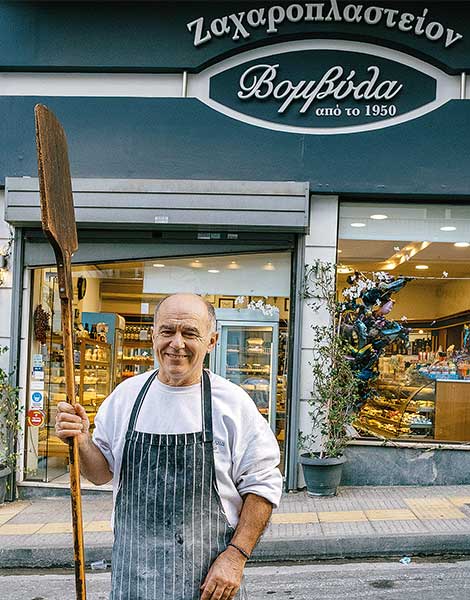
© Angelos Giotopoulos
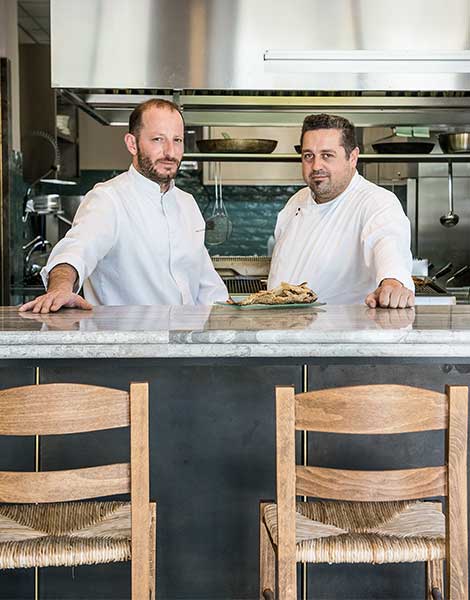
© Angelos Giotopoulos
Two of Athens’ top restaurants can be found on the Neos Kosmos stretch of Syngrou, attracting the fine-dining crowd to the area. With Hytra, on the eighth floor of the Onassis Stegi, which has received a Michelin star for its creative approach to Greek cuisine. and the modern Première at the InterContinental Athenaeum Hotel, where gifted chef Michalis Nourloglou works his magic, the area can definitely boast a certain culinary sophistication.
The launch of the National Museum of Contemporary Art in the former Fix Brewery building at the Athens end of Syngrou, the new hotels on and around the avenue, the plethora of Airbnbs and the buzz in the nearby Koukaki district have been bringing more and more foreign visitors to Neos Kosmos, not just for wining and dining, but for a spot of shopping, too.
Next to the motorcycle shops on Kallirois is Nerdom, selling all sorts of action figures, superhero T-shirts and games; Underflow is a music store-gallery that sells vinyl records and CDs of jazz rock, ethnic and experimental music, and also hosts art exhibits. On Mandrokleous Street, tucked between the houses and the small shops, the elegant space of Daphnis & Chloe offers Greek herbs and spices for sale in beautiful bags and boxes. Its bouquets of oregano from Mount Taygetus, dittany from Crete and wild thyme flowers make wonderful gifts for people who love cooking. A few streets further into Neos Kosmos, on Theodoritou Vresthenis, you can still find proper traditional loukoumi (Turkish delights) at Vomvyla, which, as the sign says, has been making this wonderful confection on site since 1950. A peek through the door offers a glimspe of a sugar-covered counter against a backdrop of white wall tiles. In with the old and in with the new, too: a happy coexistence of past and present is an important part of why things are really looking up here in this historic neighborhood.

